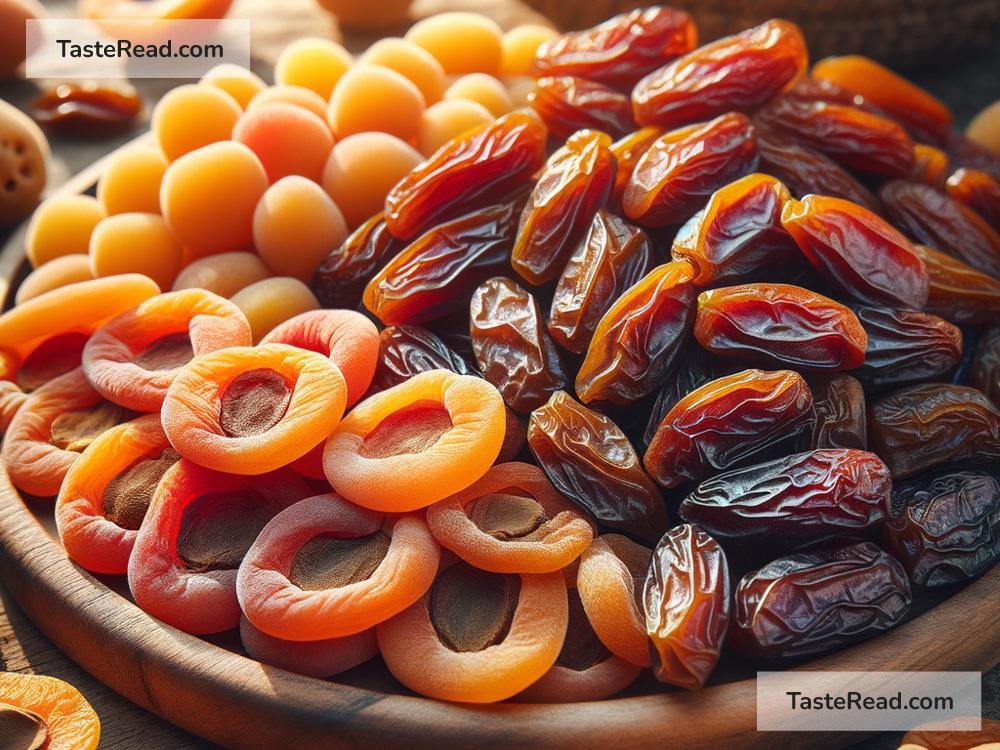The Effect of Dehydration on Fruit Sweetness
Have you ever bitten into a dried fruit like a raisin or dried apricot and thought, “Wow, this tastes sweeter than the fresh fruit!”? You’re not imagining things. This happens because dehydration changes the structure of the fruit, making its sweetness stand out. In this article, we’ll explore why and how dehydration amps up the sugary taste in fruit, all explained in simple terms.
What Is Dehydration?
Dehydration means removing water from something. In the food world, it’s a process where water is taken out of fruits, vegetables, or other ingredients using heat, air, or other methods. Removing water helps preserve food because bacteria and mold don’t grow well without moisture.
When fruits undergo dehydration, they shrink in size because water makes up a large portion of their weight. For example, a juicy grape turns into a small raisin when dehydrated, and a fresh mango slice can become thin and leathery.
Why Does Dehydration Make Fruit Sweeter?
Fruits taste sweet because of natural sugars, like fructose and glucose, inside them. These sugars are dissolved in water along with other components like fiber, vitamins, and acids. When you eat a fresh fruit, the sugars are spread out in the watery juice, which keeps the sweetness balanced.
Now imagine what happens when the water disappears during dehydration. The sugars stay in the fruit, but there’s less space for them to spread out. This means all the sweetness that was once diluted in water is now concentrated. As a result, a smaller bite of dried fruit can taste even sweeter than the fresh version!
Here’s a simple comparison: Think of a glass of orange juice. If you boil it and let most of the water evaporate, the leftover liquid will taste much sweeter because the sugar hasn’t gone away—it’s just packed into less space.
How Does This Work in Real Life?
Let’s look at some examples of fruits:
- Grapes and Raisins: Grapes are filled with water, but raisins have nearly all of that water removed. When you eat a raisin, the concentrated sugars make it taste much sweeter than a fresh grape.
- Plums and Prunes: Plums are juicy and slightly tangy, but after drying, they turn into prunes, which are intensely sweet.
- Apples and Dried Apples: Fresh apples have a balanced flavor of sweetness and tartness. When dehydrated, the tartness fades a bit, and the sweetness gets stronger.
- Mangoes: Fresh mangoes are already sweet, but dried mango slices are like bursts of sugary flavor because the sweetness is concentrated.
Does Dehydration Change the Nutrients?
You might wonder if dehydration makes fruit healthier or less nutritious. The answer is both yes and no.
-
Good News: Dehydrated fruits keep most of the vitamins, minerals, and fiber from the fresh fruit. They’re still a good source of nutrients, even without the water.
-
Bad News: When water is removed, dried fruits can become more calorie-dense. Since they are smaller and sweeter, it’s easier to eat a lot of them quickly. For example, eating 10 raisins is much faster than eating 10 grapes, but you’re consuming more concentrated sugar with the raisins. This can be a concern for people watching their sugar intake.
Can Dehydration Affect Flavor?
Interestingly, dehydration doesn’t just make fruits sweeter—it can also change other flavors. For example, the tangy or sour notes in some fruits, like strawberries or pineapple, might become less noticeable as sweetness takes center stage. Also, dehydration often enhances the fruit’s aroma, so dried fruits can smell stronger than fresh ones.
The texture changes too. Fresh fruits are usually crisp or juicy, while dried fruits are chewy or leathery. These changes make dried fruits a popular snack because they’re easy to carry, don’t spoil quickly, and taste delicious.
Different Ways Fruits Are Dehydrated
There are several ways to dehydrate fruits:
-
Sun-Drying: Fruits are left out in the sun to dry naturally. This is one of the oldest methods, but it relies on warm and dry weather.
-
Oven-Drying: Fruits are placed in an oven at a low temperature to remove moisture. This process is faster and works year-round.
-
Freeze-Drying: In this method, water is removed by freezing and then applying pressure. Freeze-dried fruits retain their shape and flavor but still taste concentrated.
-
Dehydrators: These machines are designed specifically to remove water from foods efficiently and evenly.
No matter the method, the result is the same—fruit that’s smaller, sweeter, and longer-lasting.
Conclusion
Dehydration has a fascinating effect on fruit sweetness. By removing water, the sugars inside the fruit become more concentrated, making the dried fruit taste much sweeter than its fresh counterpart. While dried fruits are nutritious and convenient, they pack more sugar in a smaller bite, so it’s important to enjoy them in moderation.
Next time you bite into a raisin or dried apricot, take a moment to appreciate how dehydration transforms ordinary fruit into a sweet treat. It’s a perfect example of how chemistry and nature work together to change the way our food tastes.
Now you know why dried fruits taste so sweet and delicious! Would you give dehydrating fruit a try at home? Let us know in the comments.


